Dateline – February 2022 – McKinney, Texas
In late January I received an interesting email from a nice lady in McKinney, Texas. Included in the note were several pictures of an unusual looking squirrel… and a critical question. A sampling of the pictures Bonnie sent me can be seen below.
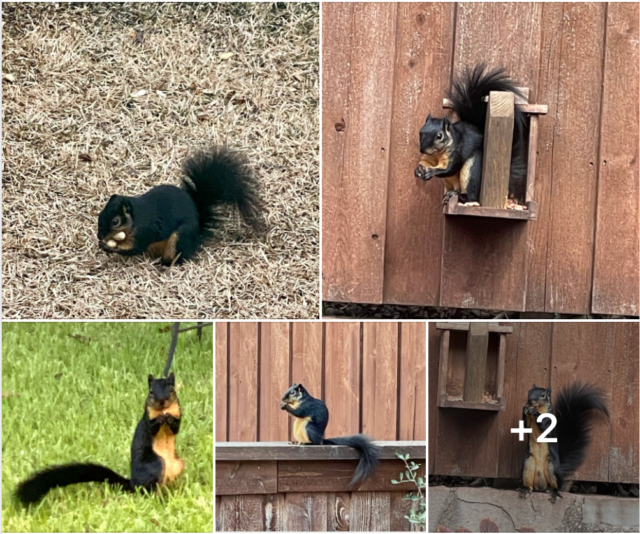
As for the question… What Bonnie really wanted to know is: Just what the heck is up with this strange black and orange squirrel that keeps coming to my yard!?!
As you can see from the photos above, this odd visitor to Bonnie’s backyard was decked out in a color scheme more suitable for a Halloween decoration than to an animal trying to stay hidden among the bare tree branches of a deep Texas winter. The unusual looking rodent presented rich shades of black on its upper surfaces, while retaining the bright orange coloration of a more typical squirrel on its belly and cheeks. Bonnie was curious about the squirrel’s out-of-the-ordinary appearance, and was searching for an answer.
It would seem that what we have here is a Fox Squirrel with a rare genetic condition known as melanism. Melanism is similar to the more familiar conditions of albinism and leucism, except in the case of melanism there is an excess of pigment rather than the lack thereof. See below for the definition of melanism from the Biology Online website.
Melanism is a condition in which a bodily part is morphologically dark due to the unusually high deposition of melanin. Melanin is a dark pigment produced by the specialized cells called melanocytes. This pigment attributes to the dark coloration of the hair, eyes, skin, plumage, pelage, and other bodily parts of a living organism. A black panther common in the equatorial rainforest of Malaya and the tropical rainforest of Mount Kenya is an example of an animal with melanism.
Melanism is in contrast to albinism. The latter is a condition where melanin production is lacking or insufficient. In humans, albinism results in reddish eyes, whitish hair and very pale skin.
Biology Online
After some additional correspondence, Bonnie and her husband were kind enough to invite me out to their home for an opportunity to take some pictures of my own. I stopped by their neighborhood three times over the course of as many days, sitting outside for hours on end while waiting for their special squirrel to make an appearance. And eventually he did! Two times to be exact, and then only for a minute or two. But it was plenty long enough to get a nice collection of photographs to share with you all!
But before we have a look at those pictures, let’s begin with a quick reminder of what a typical Fox Squirrel looks like. Ordinarily a Fox Squirrel’s fur is colored a gray agouti on its upper surfaces, and a vivid orange on its underside. See the photograph below.

Now let’s take a look at Bonnie’s special squirrel. The difference in its appearance couldn’t be more striking. On this unique squirrel a solid black coat takes the place of the more typical gray fur we might expect to see. The areas of dark hairs accentuated the normal patterns of orange fur, making them much more noticeable than usual—especially around the ears, cheeks, snout, and eyes…
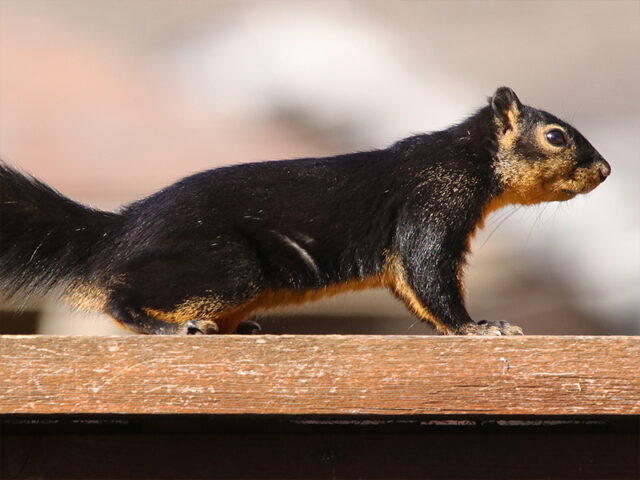
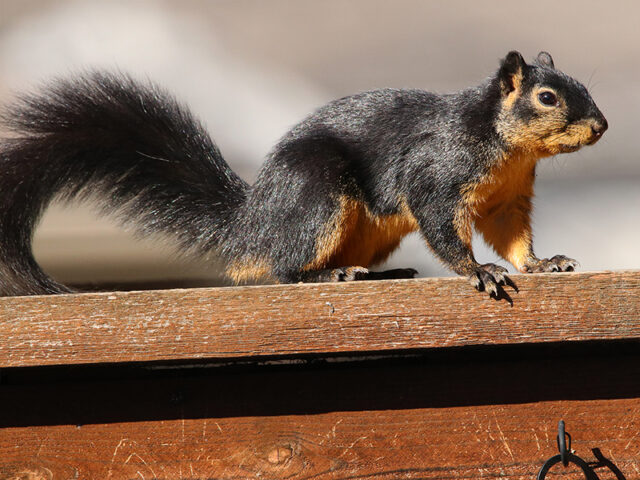
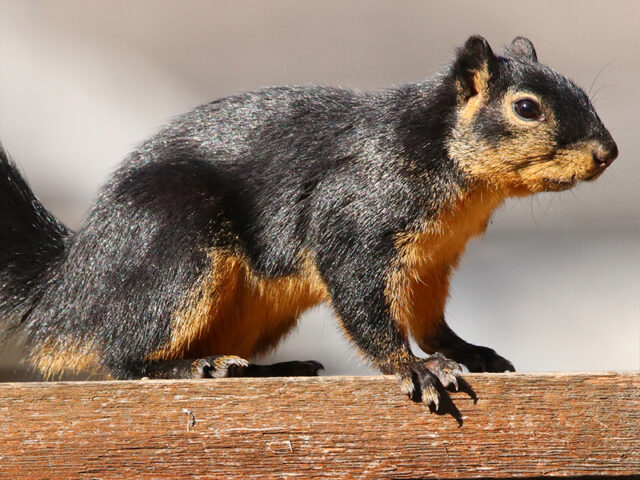

accentuated by the rich, black fur

Bonnie keeps her bird feeders well supplied, which surely accounts for the squirrel’s strong affinity toward her backyard. And as you might expect, the birdseed was also very popular with many of other critters living in this neighborhood. As I sat in the backyard waiting for the cause celebre to show, I passed the time by photographing the menagerie of birds that came and went from the yard in a constant flux. Dozens of little birds stopped by, and I took as many pictures as I could manage! Several examples of more typical Fox Squirrels visited as well. A small selection of the photographs I recorded follows…


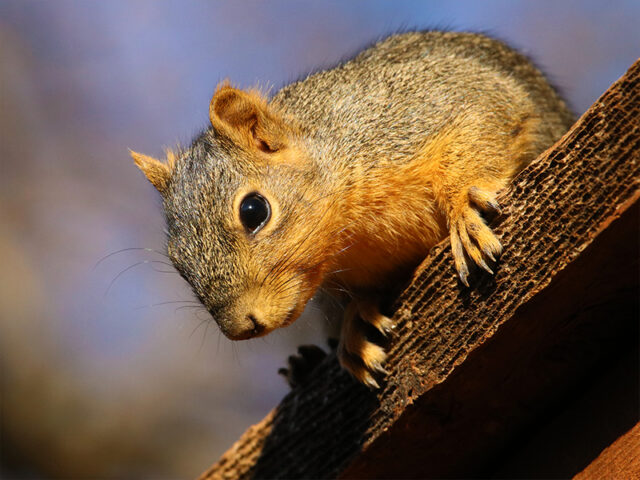
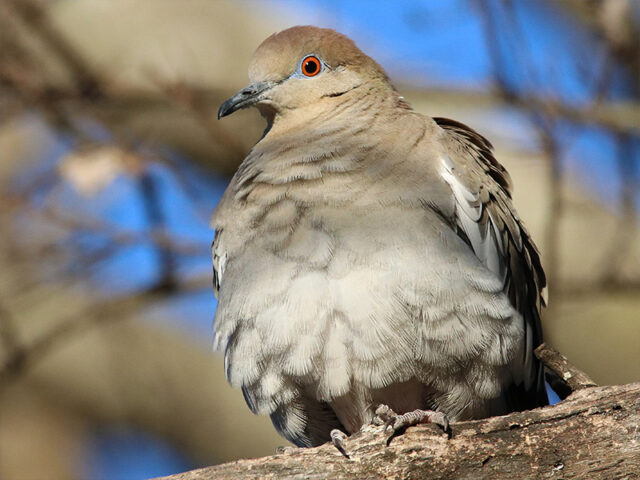


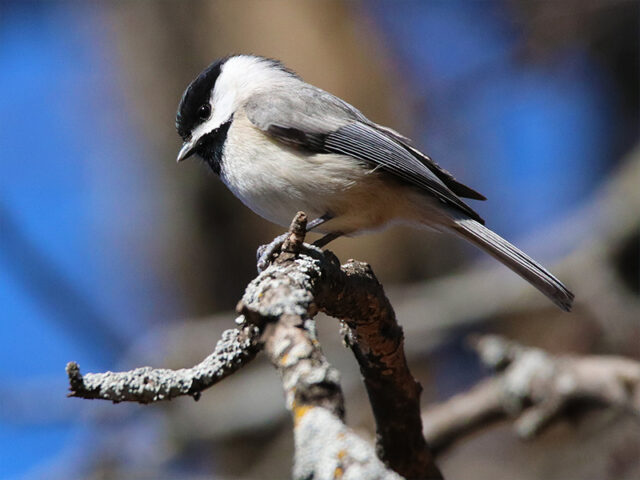

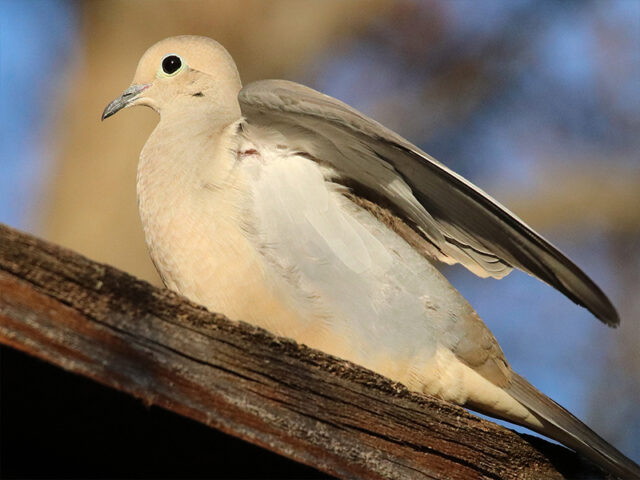

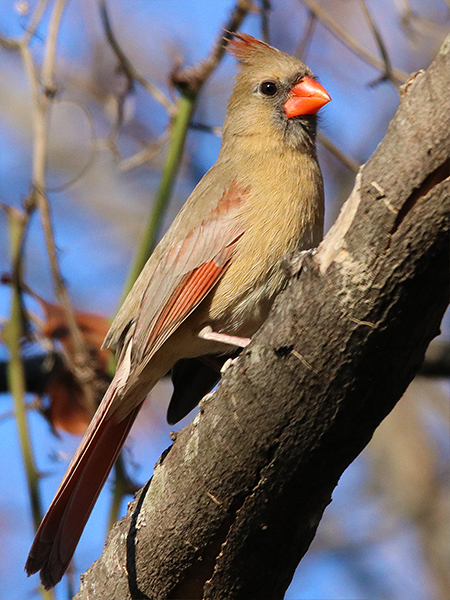
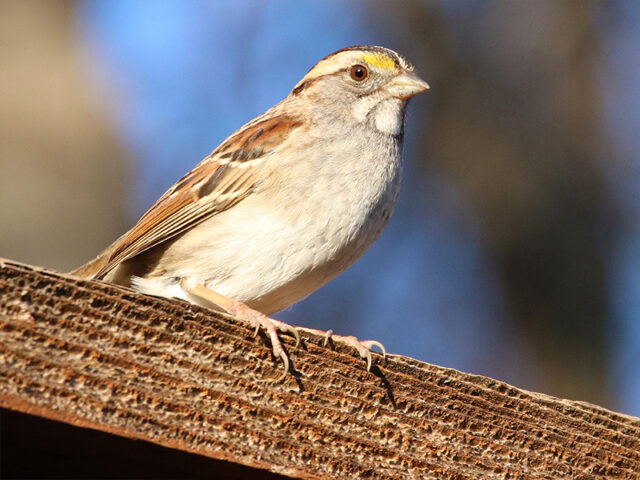
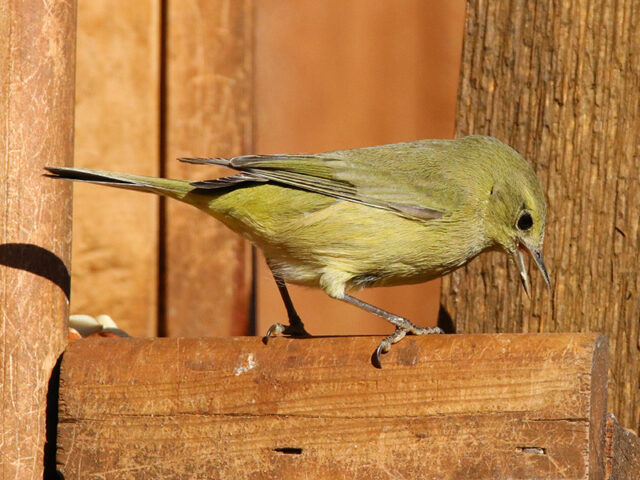
That’s a pretty nice collection of pictures if I do say so myself! I rarely sit and wait while doing wildlife photography—I’ve always preferred to stay on the move. Nonetheless, I have to admit that I really enjoyed the time I spent doing this project. While using this technique the birds and squirrels soon became accustomed to my presence in Bonnie’s backyard, and before long they were coming and going like I wasn’t even there. The opportunity to observe their candid behaviors and to take photographs from relatively close range really made this effort special. It was a lot of fun!
And like I mentioned earlier, the unordinary squirrel stopped by for a second time during my last morning on site. I was fortunate enough to get one more set of pictures of the dark-colored rascal at that time. So, let’s close out this post with another look at our unique urban Fox Squirrel—the McKinney Melanistic! See below for a few more shots…
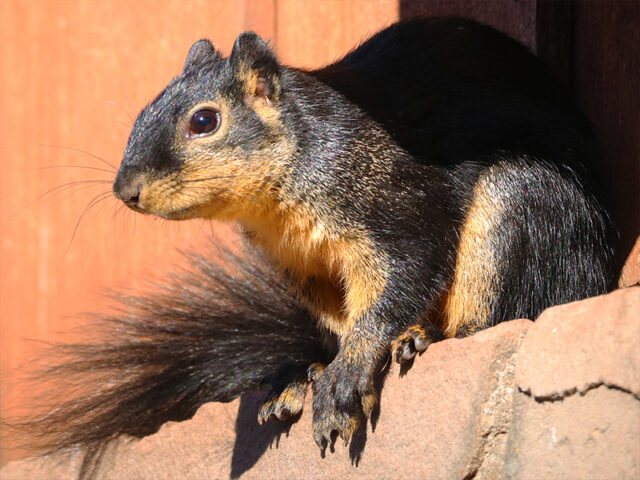
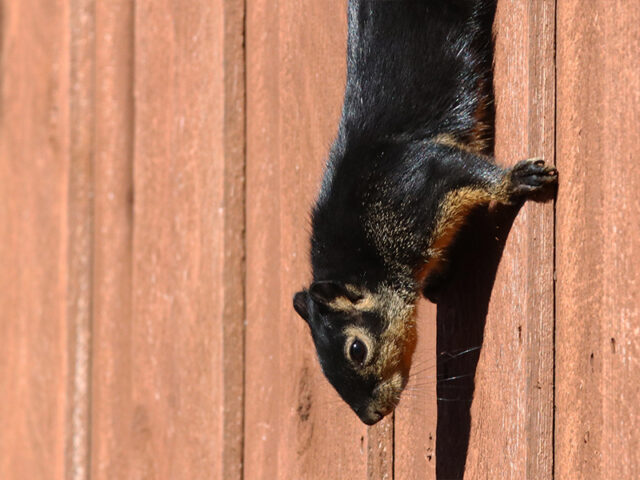
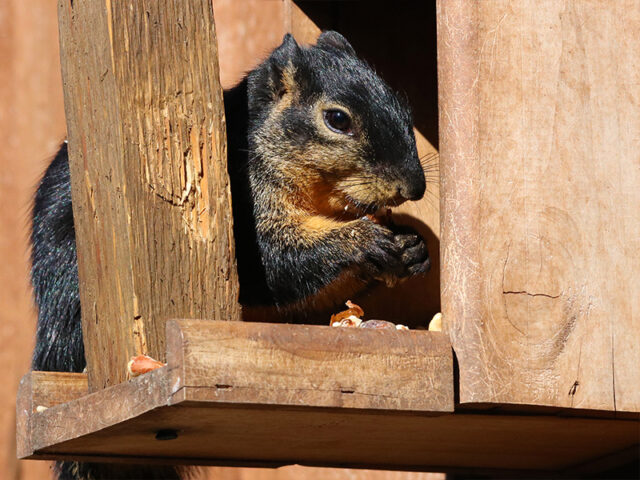

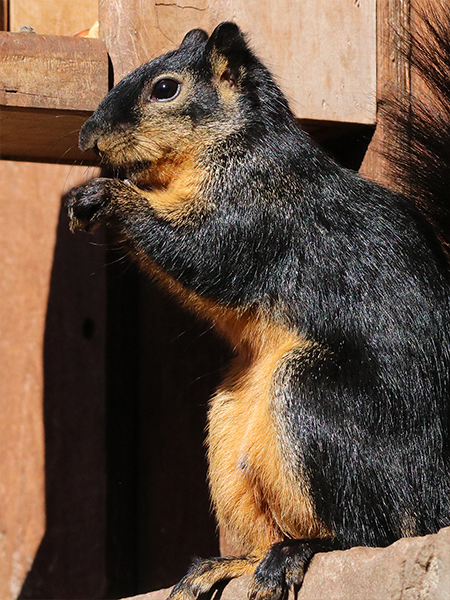

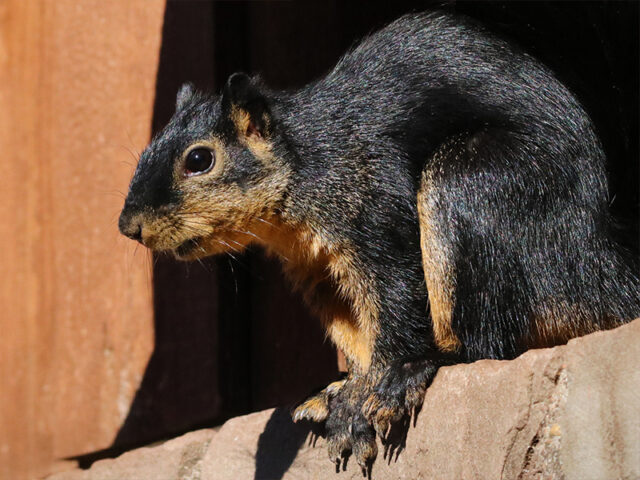






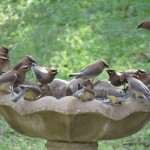


We are located in the Texas hill country and recently received a family of fox squirrels who have taken up residence in the base of one of our big tooth maple trees. They enjoy searching through the area for treats and have even found their way up our back deck stairs to the kitchen porch, walking along the decks hand railing and sometimes splooting on the hand rail.
Their markings are all black fir, no white tipped nose, and the large tail has some grey mixed with the black hairs. Its head is a bit flatter profile than our grey and red squirrels, and the nose brow is a bit raised. Beautiful critter, I enjoy its behaviors and am glad it found a home here in the hollow.
Have as yet to see it visit the black walnut or hickory trees for nuts on the ground that lies some fifty yards from its home in the big tooth maple.